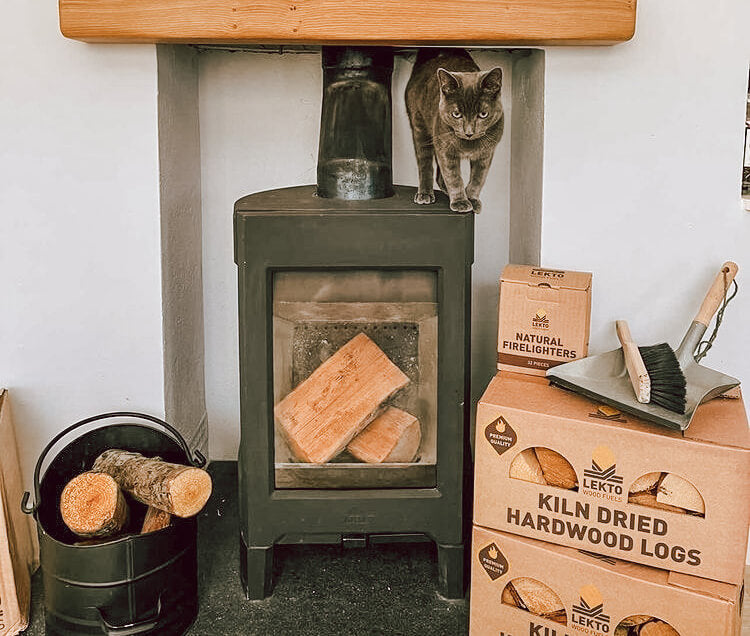
Kiln-Dried Vs Seasoned Firewood – Is There a Difference?
So, you’ve decided to upgrade your go-to firewood to high-quality, extra dry logs and briquettes, and as you start delving deeper into the ins and outs of efficient fire-burning, there’s two types of firewood that seem to pop up time and time again: seasoned firewood and kiln-dried firewood.
When it comes to finding the perfect fuel for your wood-burning stove, having good working knowledge of the different types of woods available and understanding what they’re best suited for is fundamental for maintaining a healthy stove and get the most out of your fire.
It may be easy to say that picking between kiln-dried firewood or seasoned is mostly a matter of personal preference – and yet, the kiln-dried vs seasoned firewood debate is still as much of a hot-button topic as ever.
Here’s a handy guide that will clarify what the main differences between the two types of wood are, and give you some extra insight on which is best suited to your specific needs!

Kiln-Dried Firewood
Let us preface the conversation by saying this: technically, there shouldn’t be much of a difference between seasoned and kiln-dried firewood.
Both types refer to wood that has achieved a moisture content below 25% (a requirement that jumps to at least 20% for kiln-dried wood), a necessary feature for a fire that’s easier to light and safe for your home and appliances.
However, many types of wood marketed as seasoned firewood will contain excessive moisture going slightly (or greatly!) above the 25% prerequisite, making for firewood that is inefficient, frustratingly hard to light, and - most importantly - hazardous for your stove and our planet’s air quality.
With kiln-dried firewood, on the other hand, you are pretty much guaranteed a low moisture content (from 20% to as low as 9%). This makes it ideal for getting a fire going for hours with minimal tending and ensures a “clean”, safe burn each time.
Kiln-dried firewood is a great choice for both indoor and outdoor fires, as it can burn long and bright in pizza ovens, open fires, wood burners, and firepits – while ensuring minimal smoke and ash.
Seasoned Firewood
Circling back to our kiln-dried vs seasoned firewood debate, the main difference between kiln-dried and seasoned wood is how they are dried, or “seasoned”.
Seasoned firewood is dried naturally through an open-air process instead of relying on a specialised kiln, resulting in air-dried logs. That is the reason why the moisture content of naturally seasoned logs tends to vary so much and can’t be fully guaranteed by manufacturers.
On top of that, you’ll find that seasoned firewood has to fit very specific size requirements in order to be thoroughly dried: seasoned logs should be cut into 25cm lengths with a diameter of between 5 – 15cm.

Kiln-Dried Vs Seasoned – Which One Is Best?
It’s clear that the biggest benefit of kiln-drying wood comes down to efficiency: you can burn fewer logs while ensuring a higher heat output and a cleaner fire free of dangerous creosote. At the same time, however, seasoned wood still has a key benefit going for it – it is cheaper than wood that has been kiln-dried.
If sticking to a low budget is what fits your priorities best, seasoned logs may be a better option, though you will have to consider the hazards of regularly burning higher moisture firewood and the lower heat output you’re likely to get out of it.
While there’s no doubt that both have their pros and cons, if we had to pick then kiln-dried would win every time. It is simply the best option on the market if you are looking for a reliable, safe, and efficient fire, and we would say that justifies the higher price tag.
With that said, if you are fully equipped with a moisture meter and have plenty of time to dedicate to measuring each seasoned log before burning it, then you’re likely going to be just safe using seasoned firewood.
When measuring the pros and cons of both, it’s quite unsurprising to see that more and more wood fuel manufacturers are offering kiln-dried wood as the preferred choice over air-dried logs – and we’re proud to say we are part of this camp too!
At Lekto Wood Fuels, we offer two types of kiln-dried firewood, Kiln-Dried Oak Logs and Kiln-Dried Birch Logs. Both come in 100% plastic-free cardboard packaging to ensure they’re as environmentally sustainable as they can be, making them the best option for eco-conscious consumers looking for wood that is as kind to their stove as it is to the planet.
Ultimately, the choice between kiln-dried and seasoned firewood is yours – but if you are leaning towards the former, you know what door to knock on!

